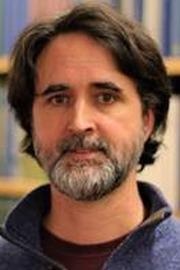How Industrial Fishing Has Altered the Natural Balance of the Ocean
 Thought LeadersIan HattonAlexander von Humboldt Research FellowMax Planck Institute for Mathematics in the Sciences
Thought LeadersIan HattonAlexander von Humboldt Research FellowMax Planck Institute for Mathematics in the SciencesAZoCleantech speaks to Ian Hatton from Max Planck Institute for Mathematics in the Sciences about the consequences of industrial fishing and its effect on the ocean's natural balance.
How did you begin your research
into industrial fishing and its effect on the ocean?
We began by compiling the biomass of all organisms in the ocean, from bacteria to whales. We used data from hundreds of thousands of measurements, from many different sources and locations globally to estimate the total biomass over the entire ocean. We also tallied meta-analyses and model output to reconstruct biomass in the years prior to 1850, when the ocean was in a more pristine state. Our methods were tailored to each major group of organisms.
What is the Sheldon size spectrum
and how does it apply to your research?
We are accustomed to grouping organisms into species, but the Sheldon size spectrum groups organisms into size categories, regardless of which species they belong. These size classes get multiplicatively larger as we go from the smallest to the largest (e.g., 1, 10, 100 etc.) The Sheldon spectrum is the hypothesis, now 50 years old, that the total biomass in these different size groups is constant from bacteria to whales. This means that although whales might be 23 orders of magnitude larger than a bacteria (a one with 23 zeros), bacteria are 23 orders of magnitude more abundant, so their total biomass is equal.
What did your research involve?
Our research involved assembling all these disparate data sources to reconstruct the total biomass of all groups from bacteria to whales at a pristine point in time, before industrial fishing and whaling (circa 1850), and compare it to what it looks like today.
How has wide-scale industrial fishing
affected oceans?
Different researchers might have different perspectives on the impacts of fishing, but the biomass structure of the ocean has been dramatically altered as a result of fishing. We found that the Sheldon spectrum hypothesis is broadly supported by data reconstruction for the pristine ocean, but the largest 1/3 of the spectrum (fish above 10 grams) have been significantly reduced so that this extremely large-scale pattern no longer holds.

Image Credit: Max Planck Institute for Mathematics in the Sciences
How did your research team construct a large global dataset of marine organisms?
We used >200,000 water samples of bacteria and zooplankton, satellite imagery of chlorophyll to estimate phytoplankton, spatially resolved global biogeochemical models for fish biomass and IUCN data for marine mammals.
How did this dataset enable your team to
differentiate the spatial distribution of
12 major aquatic life groups in the ocean?
We used environmental correlates such as temperature and chlorophyll, to interpolate these data over the global ocean, for each group. We also employed two independent spatially resolved global models constrained by catch data to estimate fish over the global ocean. For large mammals, we used global population estimates from the IUCN. Essentially, we tailored our methods to the data available for each major group.
How did you use historical reconstructions
and marine ecosystem models to assess
marine biomass in pristine, pre-20th
century oceans? What was the purpose of this?
We used historical reconstructions to assess the biomass spectrum before industrial fishing. This involved running our fish models back in time prior to industrial fishing, as well as using prior published marine mammal reconstructions. These historical reconstructions are beset by large uncertainties, but still provide a first-order approximation of what the oceans might have looked like before industrial fishing and whaling began.
How did your research highlight the human
impacts on marine biomass and the
inefficiency of fishing?
We demonstrated that the size spectrum, possibly life’s largest scale pattern, has been altered by the direct impacts of fishing. In other words, human activity has dramatically changed the law-like property of the ocean. We are still not sure of what the consequences of this could be.
Video Credit: Max Planck Institute for Mathematics in the Sciences
Do you have any future research you are
able to discuss?
We are currently investigating theoretically where this very large-scale pattern originates. Much of prior thinking on this question was focused on certain groups such as zooplankton. By showing that the pattern appears to hold across all marine life, we need to expand our thinking to processes that could be common across the tree of life.
Where can readers find more information?
https://www.science.org/doi/10.1126/sciadv.abh3732
https://www.mis.mpg.de/institute/presse/news/hatton-humboldt-fellowship.html
About Ian Hatton
 Ian Hatton has a background in biology. He previously studied and worked at McGill University, Canada, the National Institute for Mathematical Sciences, South Korea, Princeton University, USA, and the Institut de Ciència i Tecnologia Ambientals in Barcelona, Spain.
Ian Hatton has a background in biology. He previously studied and worked at McGill University, Canada, the National Institute for Mathematical Sciences, South Korea, Princeton University, USA, and the Institut de Ciència i Tecnologia Ambientals in Barcelona, Spain.
He is currently an Alexander von Humboldt Research Fellow at the Max Planck Institute for Mathematics in the Sciences in Leipzig, Germany.

No comments:
Post a Comment